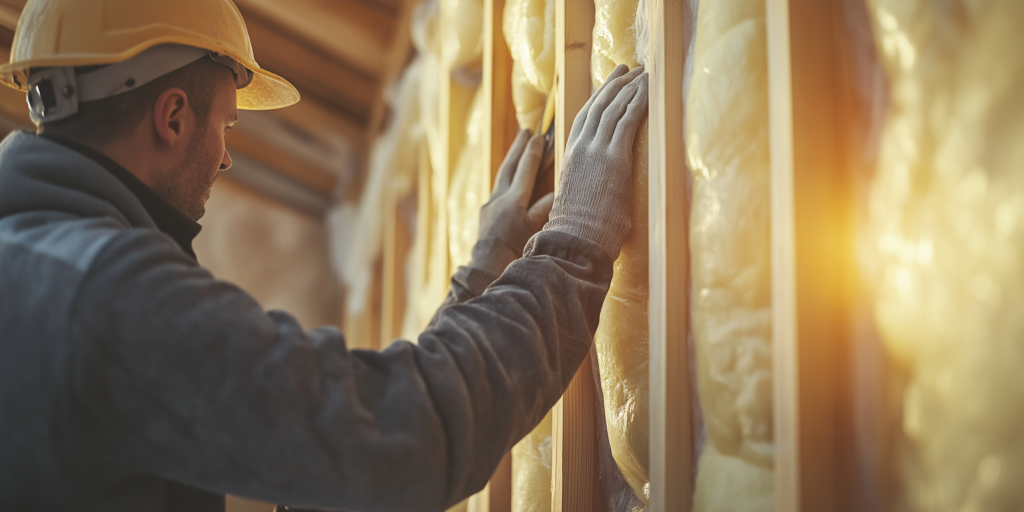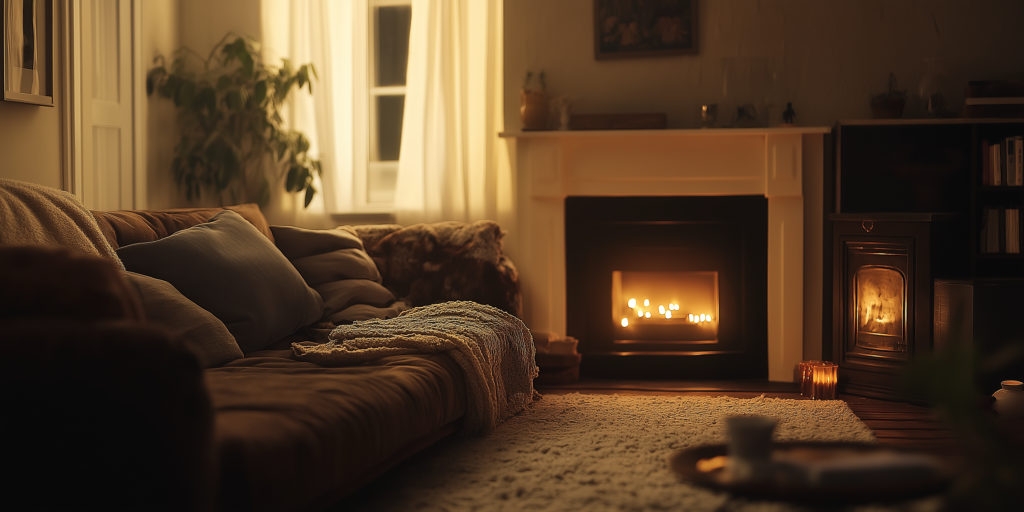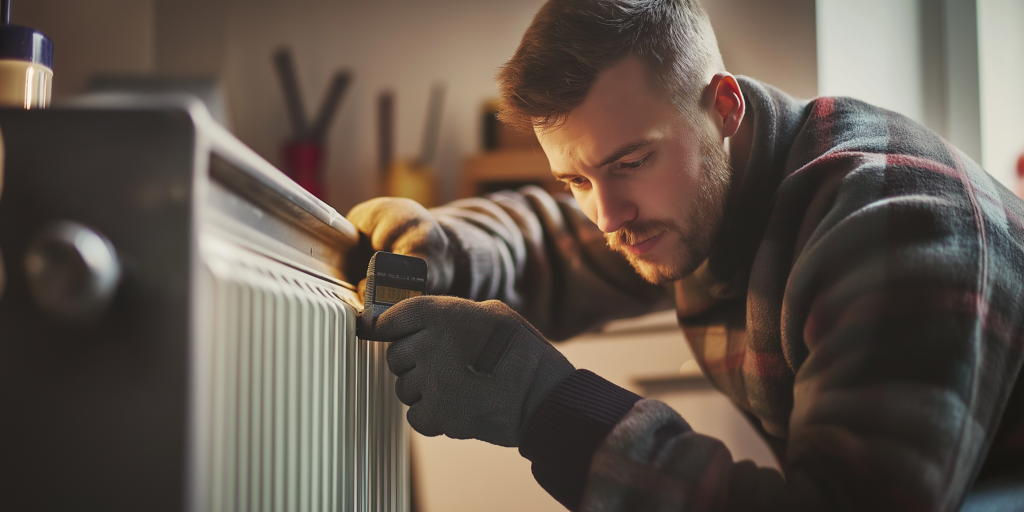Winter in the UK can be harsh, and keeping your home warm without breaking the bank is a challenge many homeowners face. This guide provides essential tips to ensure your home stays cosy throughout the colder months.
Whether you’re looking to improve insulation, upgrade your heating system, or simply find more efficient ways to heat your home, these tips will help you stay warm and save on energy costs.
1. Insulation Is Key

Proper insulation is crucial for maintaining warmth. Insulation works by trapping heat inside your home, preventing it from escaping through the roof, walls, and floors. Here’s how you can ensure your home is well-insulated:
- Loft Insulation: Up to 25% of heat loss in an uninsulated home occurs through the roof. Adding or upgrading loft insulation can make a significant difference. Aim for at least 270mm of insulation material for optimal results.
- Cavity Wall Insulation: Homes built after the 1920s typically have cavity walls, which can be insulated to reduce heat loss. Injecting insulation material into the cavity can cut heat loss by up to a third.
- Floor Insulation: Insulating under the floorboards on your ground floor will reduce heat loss. If you have a basement or crawl space, insulating this area can also help keep your home warmer.
- Draft Proofing: Gaps around doors, windows, and other areas can let in cold air. Use draft excluders, weather stripping, and sealant to close these gaps. Don’t forget to check for drafts around chimneys, vents, and where pipes enter your home.
2. Upgrade Your Windows
Windows are another common area where heat escapes. Upgrading to more efficient windows or improving your current ones can help:
- Double Glazing: Installing double-glazed windows reduces heat loss significantly compared to single glazing. Double glazing consists of two layers of glass with a gap between them that acts as an insulating barrier.
- Secondary Glazing: If double glazing is too costly, secondary glazing is a more affordable option. This involves adding a secondary pane of glass or acrylic inside your existing windows.
- Thermal Curtains and Blinds: Heavy, thermal-lined curtains or blinds can help keep the heat in during the night. Close them as soon as it gets dark to trap in the warmth.
- Window Film: Applying a window film can add an extra layer of insulation. This is a cost-effective way to reduce heat loss through your windows.
3. Efficient Heating Systems

Ensuring your heating system is running efficiently is essential for keeping your home warm and your energy bills low:
- Boiler Maintenance: Regularly servicing your boiler can prevent breakdowns and ensure it’s running efficiently. An annual service is recommended to keep your boiler in good working order.
- Radiator Efficiency: Bleed your radiators to remove any air pockets that prevent them from heating up fully. This simple task can improve the efficiency of your heating system.
- Upgrading Your Boiler: If your boiler is over 10-15 years old, consider upgrading to a newer, more energy-efficient model. Condensing boilers, for example, are much more efficient than older non-condensing models.
- Underfloor Heating: Installing underfloor heating can be a more efficient way to heat your home, as it distributes heat evenly and can be cheaper to run than traditional radiators.
4. Smart Thermostats
Investing in a smart thermostat can save energy and reduce heating costs by giving you greater control over your home’s temperature:
- Remote Control: Smart thermostats allow you to control your heating remotely using your smartphone. This means you can adjust your heating even when you’re not at home.
- Scheduling: Set schedules to ensure your home is heated only when needed. You can program your heating to turn on just before you wake up or return home, so you’re not wasting energy heating an empty house.
- Learning Thermostats: Some smart thermostats teach you habits and adjust the heating accordingly. They can detect when you’re at home or away and adapt to your routine for optimal efficiency.
- Energy Monitoring: Many smart thermostats provide insights into your energy usage, helping you understand how and when you use the most energy and where you can make savings.
5. Seal Drafts
Drafts can significantly reduce the effectiveness of your heating. Sealing drafts around your home can prevent heat loss and make your home feel warmer:
- Draft Excluders: Use draft excluders at the bottom of doors to stop cold air from entering. They are simple to install and can make a noticeable difference.
- Weather Stripping: Apply weather stripping around doors and windows to create a tight seal. This prevents cold air from seeping in and warm air from escaping.
- Door Sweeps: Install door sweeps on the bottom of exterior doors to block drafts. These are especially effective for doors leading to unheated areas like garages or basements.
- Chimney Balloons: If you have a chimney that you don’t use, consider using a chimney balloon to block drafts. These inflatable devices can be inserted into the chimney to prevent warm air from escaping.
6. Use Rugs and Carpets

Bare floors can contribute to heat loss, especially in older homes with wooden floorboards. Adding rugs or carpets can help insulate the floor and keep rooms warmer:
- Rugs: Place rugs on bare floors to add an extra layer of insulation. They are easy to move and can be a cost-effective way to keep your home warm.
- Carpets: Installing carpets in your home can provide better insulation than hard flooring. They help retain heat and add a cosy feel to your living spaces.
- Underlay: Use thick underlay beneath carpets for additional insulation. This not only improves warmth but also adds comfort underfoot.
7. Utilise Natural Heat
Maximise the use of natural heat from the sun to keep your home warm during the day:
- Open Curtains and Blinds: During the day, open your curtains and blinds to let in sunlight. The sun’s rays can naturally warm your home, reducing the need for heating.
- Close Curtains at Night: Once the sun sets, close your curtains and blinds to trap the heat inside. This prevents heat loss and keeps your home warmer for longer.
- South-Facing Windows: If possible, arrange your furniture to make the most of south-facing windows. These windows receive the most sunlight during the day, helping to heat your home naturally.
8. Layer Up
While it might seem obvious, wearing warm clothing and using blankets can reduce the need to turn up the heating:
- Warm Clothing: Dress in layers to retain body heat. Thermal underwear, woolly jumpers, and warm socks can keep you comfortable without relying solely on your heating system.
- Blankets and Throws: Keep blankets and throws handy for added warmth while sitting or sleeping. They can provide extra insulation and allow you to lower your thermostat without feeling cold.
- Heated Blankets: Consider using heated blankets or electric throws for additional warmth. They use less energy than heating your entire home and can keep you cosy during the night.
9. Regular Maintenance

Maintaining your heating system and addressing any issues promptly can ensure it operates efficiently throughout the winter:
- Bleeding Radiators: Regularly bleed your radiators to remove trapped air. This ensures they heat up fully and distribute warmth evenly.
- Checking for Cold Spots: Inspect your radiators for cold spots, which can indicate trapped air or sludge buildup. Addressing these issues can improve the efficiency of your heating system.
- Servicing Your Boiler: Schedule an annual boiler service to keep it in good working order. A professional service can identify and fix potential problems before they become serious.
- Thermostatic Radiator Valves (TRVs): Install TRVs on your radiators to control the temperature of individual rooms. This allows you to heat only the rooms you use, saving energy and reducing costs.
Wrapping It Up
By implementing these winter heating tips, UK homeowners can keep their homes warm and cosy throughout the colder months. Proper insulation, efficient heating systems, and smart use of resources can make a significant difference in both comfort and energy bills. Remember, small changes can add up to substantial savings and a more comfortable home environment. Stay warm and enjoy the winter season!



















